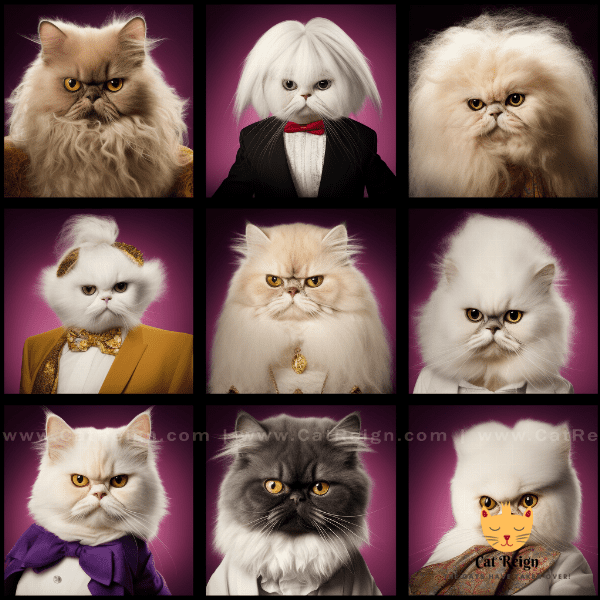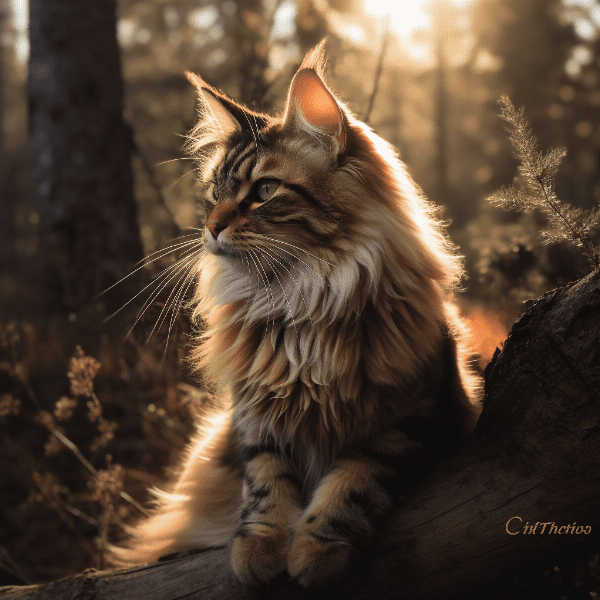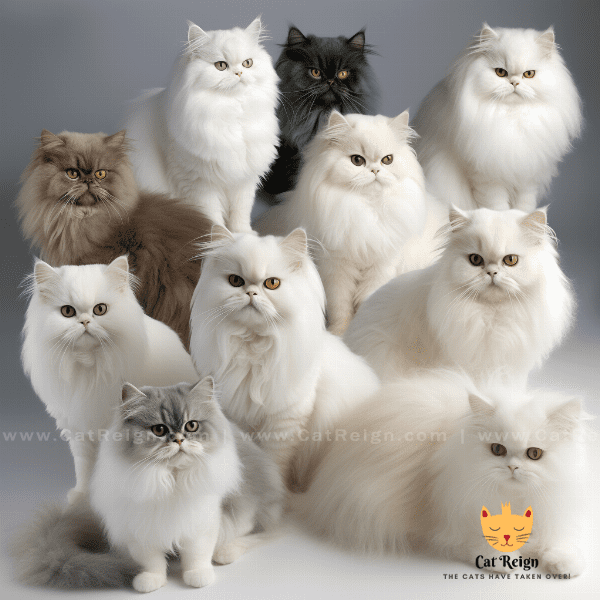Table of Contents
- Origin and History of Persian Cats
- Physical Characteristics of Persian Cats
- The Personality Traits of Persian Cats
- Grooming and Care for Persian Cats
- Health Issues Common to Persian Cats
- The Different Colors and Coat Patterns of Persian Cats
- Training and Exercise for Persian Cats
- Interacting with Persian Cats: Dos and Don’ts
- Famous Persian Cats in Pop Culture
- Adopting a Persian Cat: What You Need to Know
Origin and History of Persian Cats
The history of Persian cats is fascinating and dates back to ancient times. These adorable felines have a long and illustrious history that spans several centuries. In this section, we will explore the origin and history of Persian cats in detail.
Early History
The Persian cat is believed to have originated in the country that is now known as Iran. The breed is thought to have descended from a wildcat native to the region. It is said that these wildcats were first domesticated by the ancient Persians, who saw the value in keeping them as pets and as protectors of their crops and food stores.
Popularity Spreads
The popularity of Persian cats began to spread outside of Iran in the 17th century when they were introduced to Europe by Italian traders. Queen Victoria of England is credited with helping to popularize the breed in the 1800s. She was a well-known cat lover and kept several Persians as pets.
Evolution of the Breed
Over time, the Persian cat has evolved to become the lovable and affectionate companion that we know today. The breed was refined and developed by breeders in England and the United States in the 19th and 20th centuries. The cats were selectively bred to have a distinct round face, short snout, and thick fur. These traits have become the hallmark of the Persian breed.
Cultural Significance
Persian cats have had a significant cultural impact throughout history. They have been featured in art, literature, and even religion. In ancient Persia, cats were highly revered and considered to be sacred animals. They were often depicted in works of art and literature, and it was believed that they could ward off evil spirits and bring good luck.
In modern times, Persian cats continue to be a popular breed among cat lovers around the world. Their unique look, calm temperament, and affectionate nature make them an ideal pet for families and individuals alike.
In conclusion, the history of Persian cats is a long and storied one. From their origins in ancient Persia to their popularity in modern times, these felines have captured the hearts of cat lovers everywhere. Whether you’re a lifelong fan or a newcomer to the breed, there’s no denying the charm and appeal of the Persian cat.
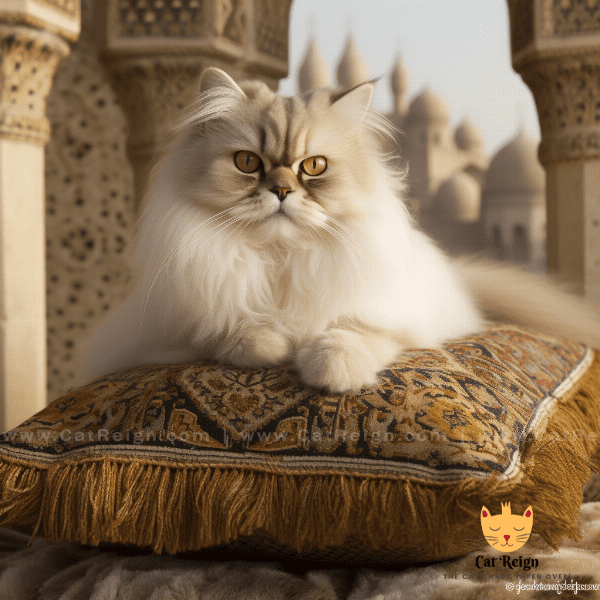
Physical Characteristics of Persian Cats
Coat
One of the most distinctive features of the Persian cat is its thick, luxurious coat. The coat is long and silky, with a dense undercoat that provides insulation. The coat comes in a variety of colors and patterns, including solid colors like white, black, and cream, and multicolored patterns like tortoiseshell and calico.
Face
Persian cats are known for their unique facial structure, which includes a flat face and a short snout. This gives the breed its characteristic “pushed-in” appearance. The eyes are large and round, and the ears are small and rounded at the tips.
Body
Persian cats have a stocky build with a broad chest and sturdy legs. They are a medium-sized breed, with adult cats weighing between 7 and 12 pounds. The tail is short and thick, and the paws are large and round.
Health Considerations
Due to their distinctive physical features, Persian cats are prone to certain health issues. One common issue is breathing difficulties, which can be caused by their short snouts. They may also be prone to eye problems, such as tearing and infection, due to their large, round eyes. It is important for Persian cat owners to keep up with regular vet checkups to monitor their cat’s health.
Grooming Needs
The Persian cat’s thick coat requires regular grooming to prevent matting and tangles. Daily brushing is recommended to keep the coat in good condition. Some Persian cats may also require occasional bathing to keep their coat clean and shiny.
In conclusion, the physical characteristics of Persian cats are what make them such a unique and beloved breed. From their thick coats to their distinctive facial structure, these felines are easily recognizable and loved by cat lovers around the world. However, it is important to keep in mind the health considerations and grooming needs of the breed when considering adding a Persian cat to your family.
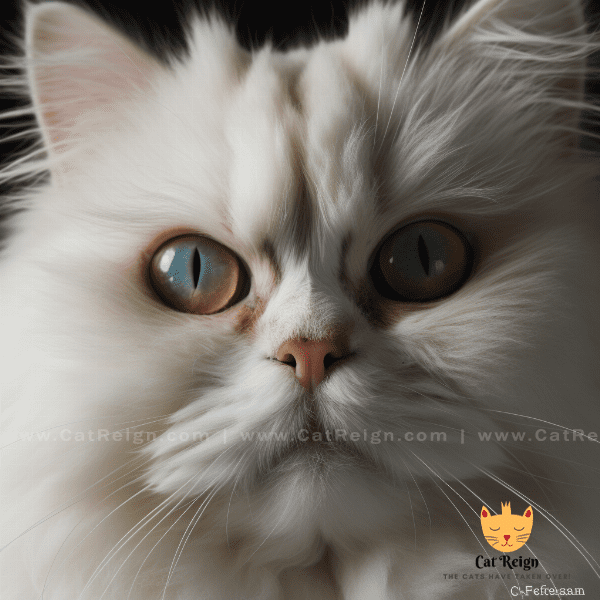
The Personality Traits of Persian Cats
Persian cats are known for their calm and affectionate nature. In this section, we will explore the personality traits of Persian cats in more detail.
Affectionate
Persian cats are known for their affectionate and gentle nature. They enjoy cuddling and being petted, and often seek out their owners for attention. They are known to form strong bonds with their owners and are loyal companions.
Independent
Despite their affectionate nature, Persian cats are also independent and can be content spending time alone. They are not as demanding as some other breeds and are happy to spend time lounging and observing their surroundings.
Quiet
Persian cats are not known for being particularly vocal. They are generally quiet and reserved, preferring to communicate through body language and facial expressions rather than meowing or vocalizing.
Playful
While Persian cats may be calm and reserved, they also have a playful side. They enjoy playing with toys and games, and can be quite active and energetic when they want to be.
Adaptability
Persian cats are adaptable to different living situations and can thrive in both apartments and larger homes. They are generally calm and quiet, which makes them a good choice for apartment living. However, they also enjoy having space to move around and play.
Temperament
Overall, the Persian cat has a calm and laid-back temperament that makes them an ideal pet for families and individuals alike. They are gentle and affectionate, and their independent nature makes them easy to care for.
In conclusion, the personality traits of Persian cats are what make them such a beloved breed. Their affectionate and independent nature, coupled with their quiet and playful demeanor, make them an ideal pet for many people. Whether you’re a lifelong cat lover or a newcomer to the world of felines, the Persian cat is a breed that is sure to capture your heart.
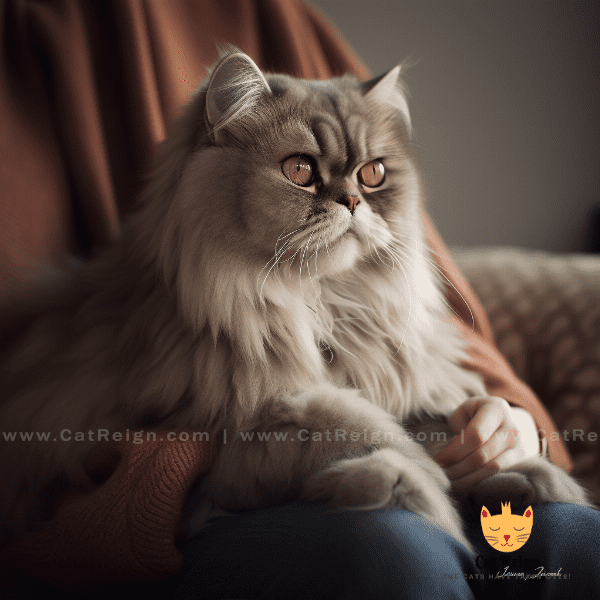
Grooming and Care for Persian Cats
The Persian cat’s thick and luxurious coat requires regular grooming to maintain its beauty and health. In this section, we will explore the grooming and care needs of Persian cats.
Coat Care
Persian cats require daily brushing to prevent matting and tangles. A metal comb and soft-bristled brush can be used to gently remove any knots or tangles. It’s important to be gentle when brushing, as the Persian cat’s skin is delicate and can be easily irritated.
Bathing
In addition to brushing, Persian cats may also require occasional bathing to keep their coat clean and shiny. It’s important to use a mild, cat-specific shampoo and to rinse thoroughly to avoid any residue that may cause skin irritation.
Eye Care
Due to their large, round eyes, Persian cats are prone to tearing and eye infections. It’s important to keep the area around their eyes clean and dry. A damp cloth can be used to gently clean the area around the eyes, and any discharge should be wiped away promptly.
Dental Care
Dental care is an important aspect of caring for any pet. Persian cats are prone to dental issues, so regular brushing and dental checkups are important. Brushing your cat’s teeth with a soft-bristled brush and cat-specific toothpaste can help prevent dental problems.
Nutrition
Feeding your Persian cat a balanced and nutritious diet is important for their overall health and wellbeing. A high-quality, protein-rich cat food can help prevent obesity and other health issues.
Exercise
Persian cats are generally calm and laid-back, but they still require regular exercise to stay healthy. Playtime and interactive toys can help keep them active and engaged.
In conclusion, grooming and care for Persian cats requires regular attention and care. By following these tips, you can ensure that your Persian cat stays healthy, happy, and beautiful. Remember, providing proper care and attention to your pet is an important aspect of being a responsible pet owner.
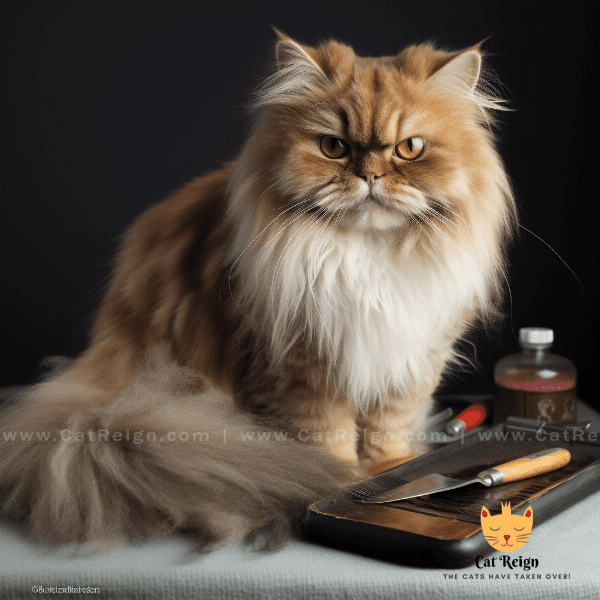
Health Issues Common to Persian Cats
Like any breed, Persian cats are prone to certain health issues that owners should be aware of. In this section, we will explore some of the common health issues that Persian cats may face.
Breathing Problems
Due to their flat faces and short snouts, Persian cats may experience breathing difficulties. This condition, known as brachycephalic airway syndrome, can cause snoring, wheezing, and labored breathing. In severe cases, it can lead to respiratory distress and require surgery to correct.
Eye Problems
Persian cats are prone to eye problems, such as excessive tearing and eye infections. The breed is also prone to a condition called entropion, where the eyelids roll inward and cause the eyelashes to rub against the eye. This can lead to irritation and corneal ulcers.
Kidney Disease
Chronic kidney disease is a common health issue among Persian cats. This condition is characterized by the gradual loss of kidney function over time. Early detection and treatment can help slow the progression of the disease.
Polycystic Kidney Disease
Polycystic kidney disease is an inherited condition that is common among Persian cats. It causes cysts to form on the kidneys, which can lead to kidney failure. Breeding programs have been established to help reduce the incidence of polycystic kidney disease in the breed.
Obesity
Persian cats are prone to obesity, which can lead to a variety of health issues, including diabetes, heart disease, and joint problems. It’s important to feed your cat a balanced diet and to provide regular exercise to help maintain a healthy weight.
In conclusion, while Persian cats are generally healthy and long-lived, there are certain health issues that owners should be aware of. By keeping up with regular vet checkups and providing proper care and attention, you can help ensure that your Persian cat stays healthy and happy for many years to come.
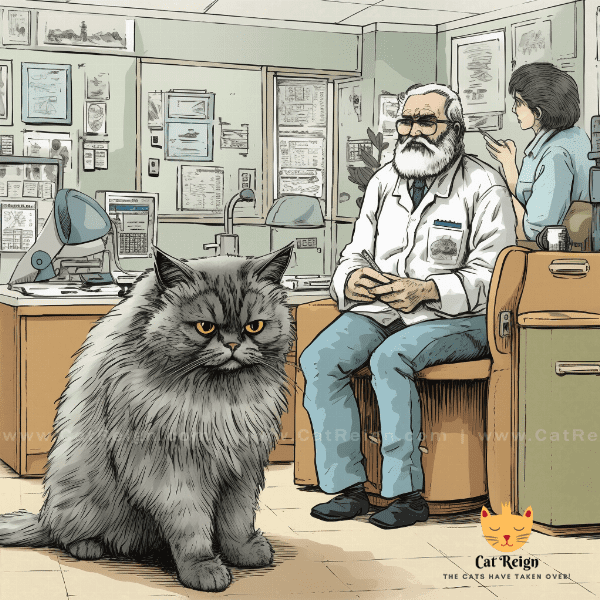
The Different Colors and Coat Patterns of Persian Cats
The Persian cat comes in a wide variety of colors and coat patterns, making each cat unique and beautiful. In this section, we will explore the different colors and coat patterns of Persian cats.
Solid Colors
Solid colors are among the most common coat colors for Persian cats. These include white, black, cream, blue, and red. These colors can be either pure or have slight variations in shade.
Bi-Color
Bi-color Persian cats have a coat that is predominantly one color with white markings on the face, paws, and tail. The most common bi-color pattern is the “tuxedo” pattern, where the cat’s coat is mostly black with white markings.
Calico and Tortoiseshell
Calico and tortoiseshell patterns are among the most distinctive and unique coat patterns for Persian cats. These patterns feature a mix of three or more colors, often including white, black, and red or orange.
Tabby
Tabby Persian cats have a coat that features a distinctive striped pattern. The stripes can be thin or thick, and may be either vertical or circular in shape.
Silver and Golden
Silver and golden Persian cats have a coat that shimmers in the light, giving them a regal and luxurious appearance. These cats can have a variety of patterns, including shaded, smoke, and chinchilla.
Other Colors and Patterns
In addition to the above colors and patterns, Persian cats can also come in a variety of other colors and patterns, including shaded, smoke, and tipped.
In conclusion, the different colors and coat patterns of Persian cats make each cat unique and beautiful. Whether you prefer the classic elegance of solid colors, the distinctive patterns of calico and tortoiseshell, or the regal shimmer of silver and golden coats, there is a Persian cat to suit every taste.
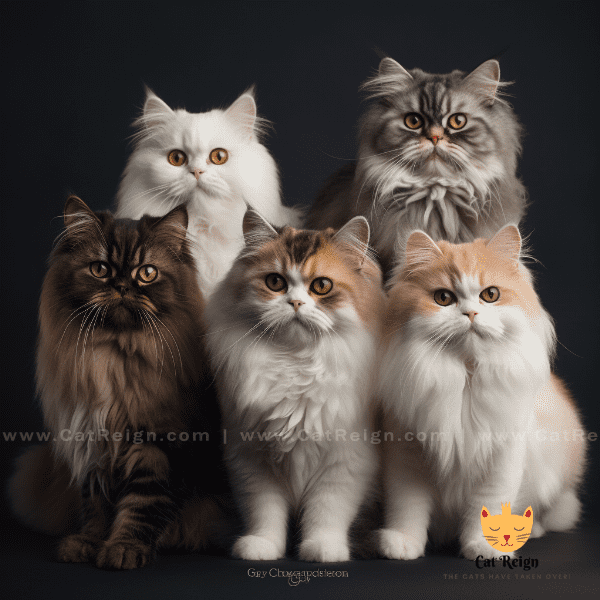
Training and Exercise for Persian Cats
Persian cats are generally calm and laid-back, but they still require regular exercise and mental stimulation to stay healthy and happy. In this section, we will explore training and exercise options for Persian cats.
Training
Persian cats are generally easy to train and can be taught a variety of commands and tricks. Positive reinforcement techniques, such as clicker training and treats, can be used to train your cat. Training can help stimulate your cat’s mind and keep them engaged.
Exercise
Persian cats are not as active as some other breeds, but they still require regular exercise to stay healthy. Interactive toys, such as puzzle feeders and feather toys, can help stimulate your cat and encourage physical activity. It’s important to provide a safe and comfortable space for your cat to play and explore.
Indoor vs Outdoor
Persian cats are best kept indoors, as they are not as well-suited to outdoor life as some other breeds. Outdoor environments can expose them to dangers such as traffic, predators, and diseases. Indoor environments can be enriched with cat trees, scratching posts, and toys to provide your cat with a stimulating environment.
Socialization
Socialization is important for all cats, including Persian cats. Early socialization can help your cat become comfortable with new people, pets, and environments. Introducing your cat to new experiences in a positive and gentle way can help prevent behavioral issues later on.
Litter Box Training
Litter box training is an important aspect of caring for any cat. Persian cats are generally clean and fastidious, and should have access to a clean and well-maintained litter box at all times.
In conclusion, training and exercise are important aspects of caring for Persian cats. By providing regular exercise and mental stimulation, you can help keep your cat healthy and happy. Training can also help prevent behavioral issues and promote positive interactions with your cat. Remember, providing proper care and attention to your pet is an important aspect of being a responsible pet owner.
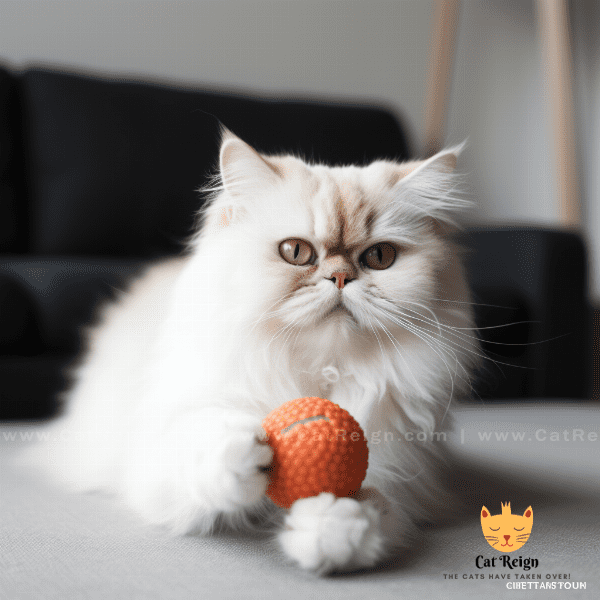
Interacting with Persian Cats: Dos and Don’ts
Persian cats are known for their calm and gentle nature, but it’s still important to interact with them in a way that respects their boundaries and needs. In this section, we will explore some dos and don’ts for interacting with Persian cats.
- Do approach your Persian cat calmly and gently.
- Do give your cat plenty of space and respect their boundaries.
- Do offer your cat affection and attention, but let them come to you on their own terms.
- Do provide plenty of toys and opportunities for play and mental stimulation.
- Do maintain a regular feeding and grooming routine to help your cat feel secure and comfortable.
- Don’t force your cat to interact with you if they are not interested.
- Don’t raise your voice or make sudden movements around your cat, as this can cause them to become frightened or anxious.
- Don’t play too roughly with your cat or use your hands as toys, as this can encourage biting and scratching.
- Don’t punish your cat for unwanted behavior, as this can damage your relationship and trust with your cat.
- Don’t neglect your cat’s grooming and health needs, as this can lead to health issues and behavioral problems.
In conclusion, interacting with Persian cats requires a gentle and respectful approach. By following these dos and don’ts, you can help ensure that your cat feels secure and comfortable in their home and with their human companions. Remember, building a strong and positive relationship with your cat is an important aspect of being a responsible pet owner.

Famous Persian Cats in Pop Culture
The Persian cat has long been a popular breed in pop culture, appearing in movies, TV shows, and even music videos. In this section, we will explore some famous Persian cats in pop culture.
Mr. Jinx
Mr. Jinx is a Persian cat who appeared in the movie “Meet the Parents” and its sequel “Meet the Fockers”. He is portrayed as a mischievous cat who plays a key role in the movies’ comedic scenes.
Choupette
Choupette is the beloved Persian cat of fashion designer Karl Lagerfeld. She has her own social media accounts and has even been the subject of a book, “Choupette: The Private Life of a High-Flying Fashion Cat”.
Grumpy Cat
While not a purebred Persian cat, Grumpy Cat’s distinctive scowl and grumpy demeanor made her a viral sensation and pop culture icon. Her unique appearance made her a favorite among cat lovers worldwide.
Princess Pea
Princess Pea is a Persian cat who appeared in the animated TV show “Peg + Cat”. She is portrayed as a princess who loves to dance and play with her friends.
Smelly Cat
While not a real cat, Smelly Cat is a song made famous by the TV show “Friends”. The song’s lyrics reference a cat named Smelly who was, well, smelly.
In conclusion, the Persian cat has left its mark on pop culture in a variety of ways. From mischievous movie characters to fashion icons, Persian cats have captured the hearts of people all over the world. Whether you’re a fan of viral cat videos or classic Hollywood movies, there is sure to be a Persian cat that has captured your attention and admiration.
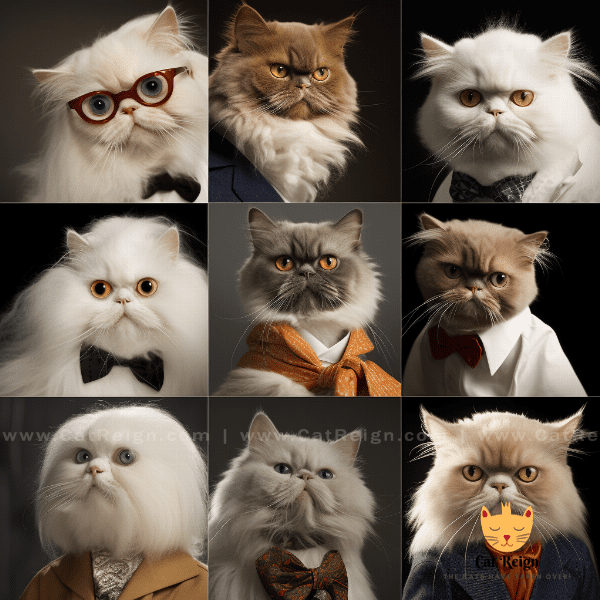
Adopting a Persian Cat: What You Need to Know
Adopting a Persian cat can be a rewarding and fulfilling experience, but it’s important to be prepared for the responsibilities that come with owning a pet. In this section, we will explore what you need to know before adopting a Persian cat.
Research
Before adopting a Persian cat, it’s important to do your research. Learn about the breed’s temperament, grooming needs, and health issues. This will help you make an informed decision about whether a Persian cat is right for you.
Adoption vs. Breeder
When adopting a Persian cat, you have the option of adopting from a rescue organization or finding a reputable breeder. Adopting from a rescue can be a great option, as it gives a cat in need a second chance at a loving home. If you choose to work with a breeder, be sure to find one who is reputable and follows ethical breeding practices.
Cost
Owning a Persian cat can be expensive, as they require regular grooming and may be prone to certain health issues. Be prepared to invest in quality food, toys, and medical care for your cat.
Grooming
Persian cats require daily grooming to maintain their thick and luxurious coat. This can be time-consuming and may require professional grooming services. Be prepared to invest in the necessary grooming supplies and time to keep your cat looking and feeling their best.
Health
Persian cats may be prone to certain health issues, such as breathing problems, eye problems, and kidney disease. Regular vet checkups and preventative care can help detect and address any health issues early on.
In conclusion, adopting a Persian cat requires careful consideration and preparation. By doing your research, finding a reputable adoption or breeder, and being prepared for the responsibilities of pet ownership, you can provide a loving and happy home for a Persian cat in need. Remember, adopting a pet is a lifelong commitment, and providing proper care and attention to your pet is an important aspect of being a responsible pet owner.
